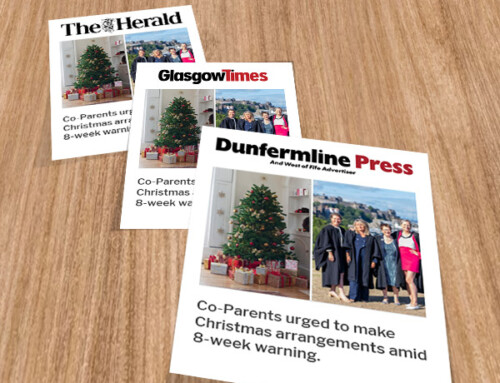It is at the very heart of the Scottish legal system, that all individuals have a right to have a say in any decision that will affect them and their families. One question that many of our clients ask is “how will this decision affect my children?”. This is particularly true in child contact cases. Parents are naturally concerned about involving their children in their court case.
Research, commissioned by the Scottish Government, has pointed to the importance of ensuring legislation is aimed at putting children at the center of decisions that affect them, while also stressing that the views of the child should be respected by the court.
There are a variety tools which exist during child contact cases, in order to obtain children’s wishes and feelings. One of these tools is the Form F9.
The form F9 is known as a “child court intimation” that can be sent, at any time during proceedings, to a child who is the subject of a court action, in relation to contact or a “Section 11” Court Order. It informs the child about the court action, their options, and also provides them with the opportunity to write to the Sheriff, explaining their feelings. If the child feels comfortable, this can be filled out by the child solely, giving the sense of independence they may not necessarily feel they have during child contact cases.
Initially, it was envisioned that when the court action was raised, an option would be for parties to request the court’s permission to send and serve a Form F9 on any children involved. This request could be quashed if the child was not deemed to be old, mature, or competent enough to complete the form.
Further, there is the option of discussing the possibility to sending the Form F9 out to the child’s school or after school classes. Inevitably, this is something that parents can discuss with their solicitor. This can then be put forward to the Sheriff for consideration. This can be particularly useful when contact with the child is a matter of increased contention.
Changing the Form F9
On 24 June 2019, the new Form F9 was launched in Scottish Courts. While initially slow burning, solicitors are actively being encouraged to consider the Form F9 in every instance the child or children are involved. It appears a far more proactive role is expected from the Court in contrast with the previous rules and their counterpart form.
The new form is colourful and appears to be much more engaging for a child looking to express their views, on a matter that will, inevitably, have great impact on their life. The language is far more child friendly and accessible, addressing previous criticisms of the old form.
The form is entitled the “What I Think Form” – it gives the child the option to tick box under the “good”, “in the middle” or “not good” faces. It also gives the child space if they feel comfortable or confident enough to give the Sheriff further comment. The not only reflects the age of the child but also the child’s ability. Arguably, this will provide greater access and for a wide variety of children involved in child contact cases.
A Fixed Form F9?
The changes made to the Form F9 are arguably indicative of the continuing progress of the Scottish court to put children at the heart of family law actions.
However, it continues to be a problem that children never hear back from the Sheriff or the court. This is something that parents and indeed children do find disheartening. Perhaps, a thank you letter from the court is something that can be discussed in the future.
While there is no fixed or right answer about whether or not to involve a child through use of the Form F9, it is encouraging to see the Scottish Courts ensuring that the views of the child are at least considered. Naturally, there are still gaps in using the new Form F9 and inevitably there will be concerns and problems that arise.
In the meantime, the Scottish Courts should be applauded for strengthening the concept of ensuring the child is at the heart of family litigation. We will see in due course just how prosperous the new Form F9 will be.







